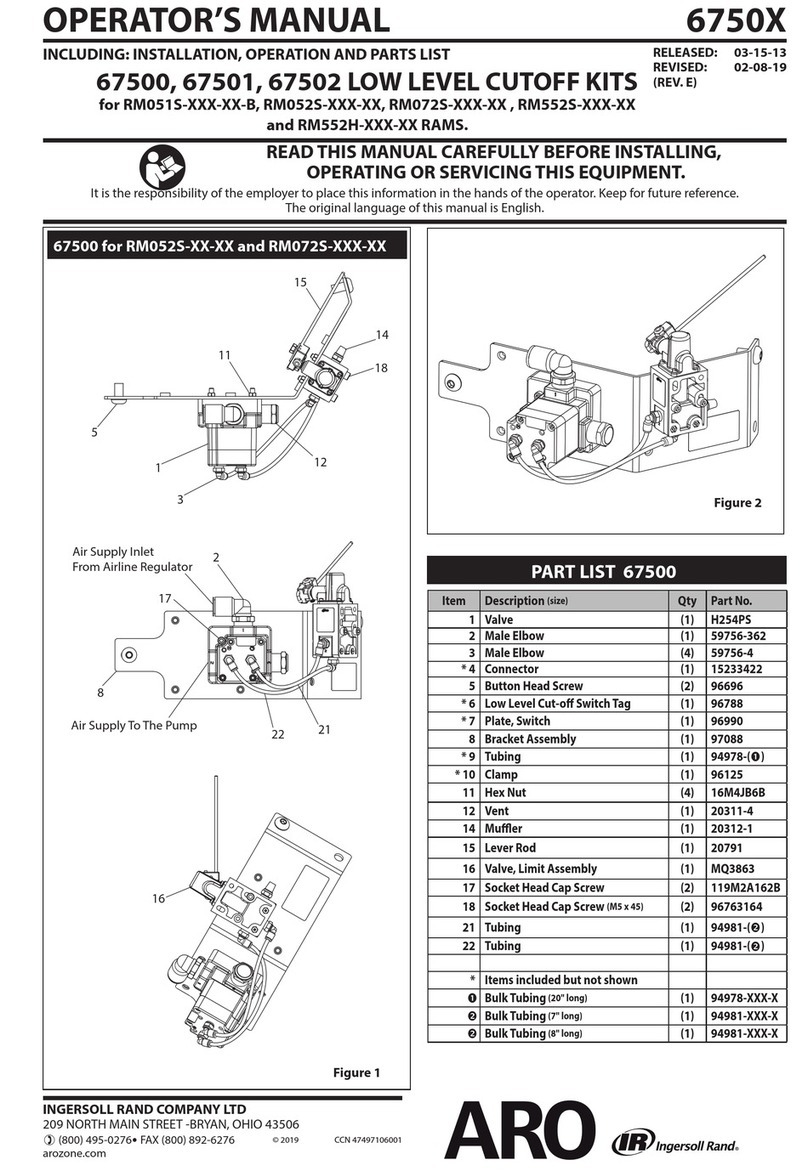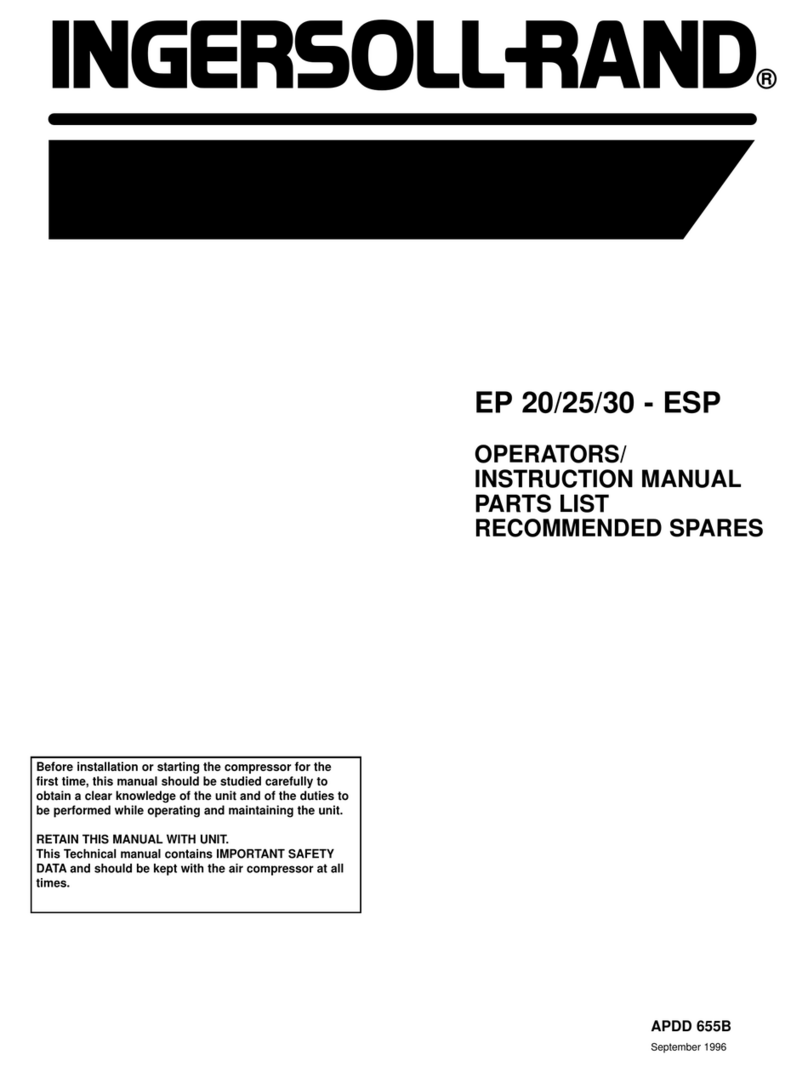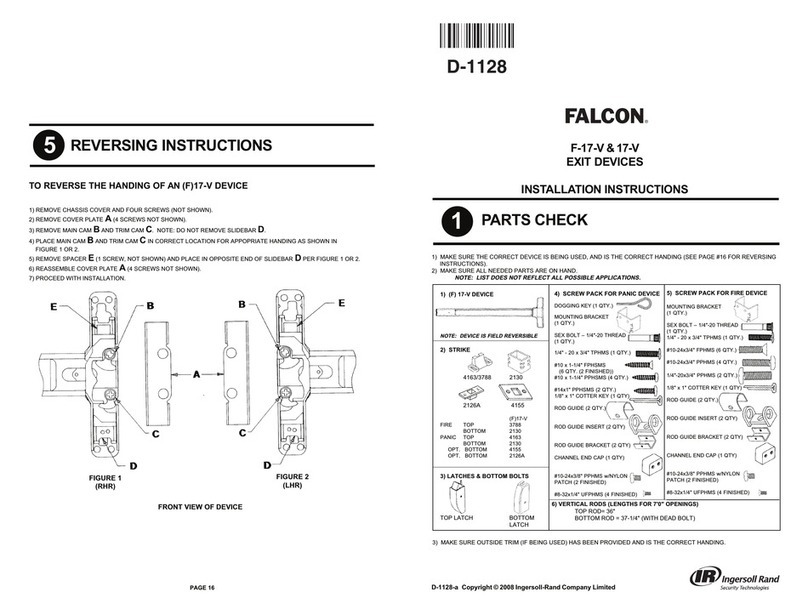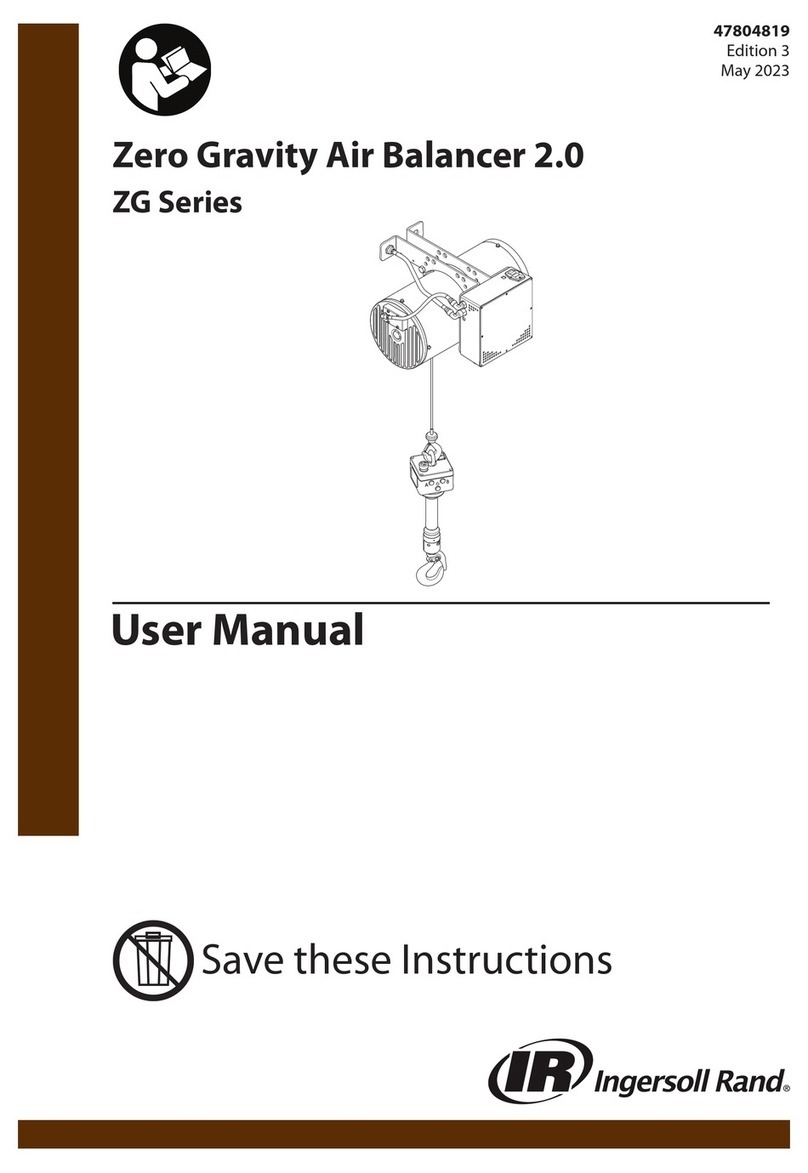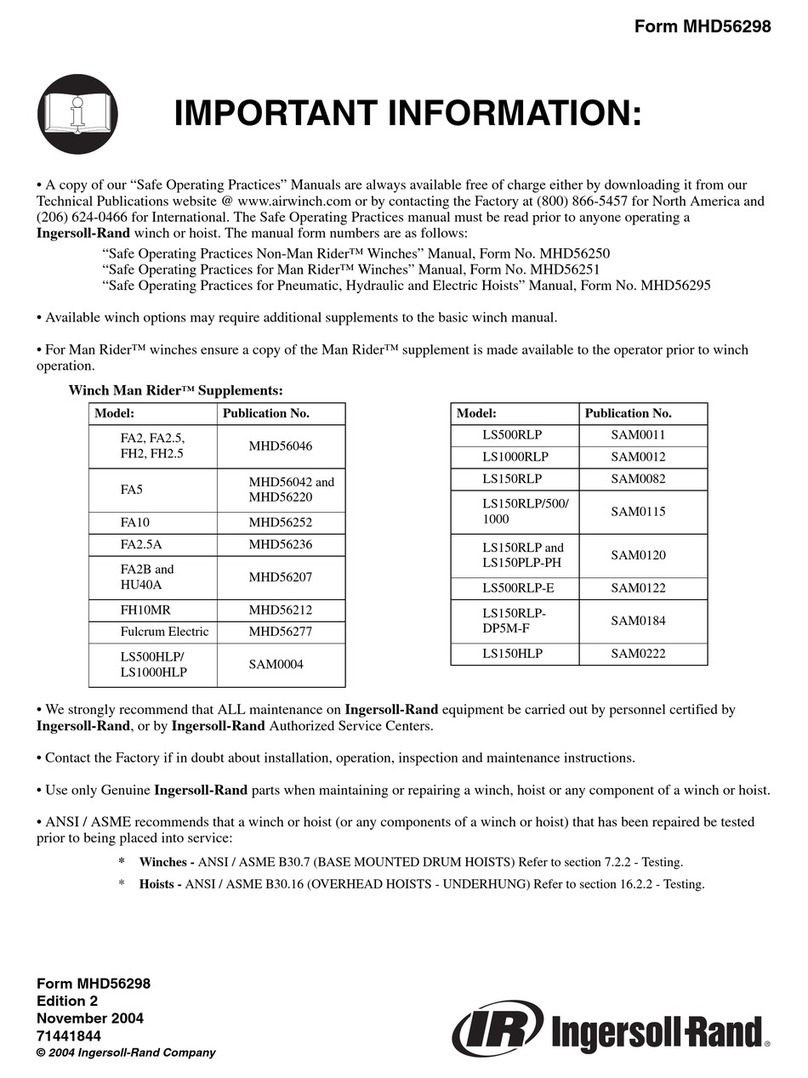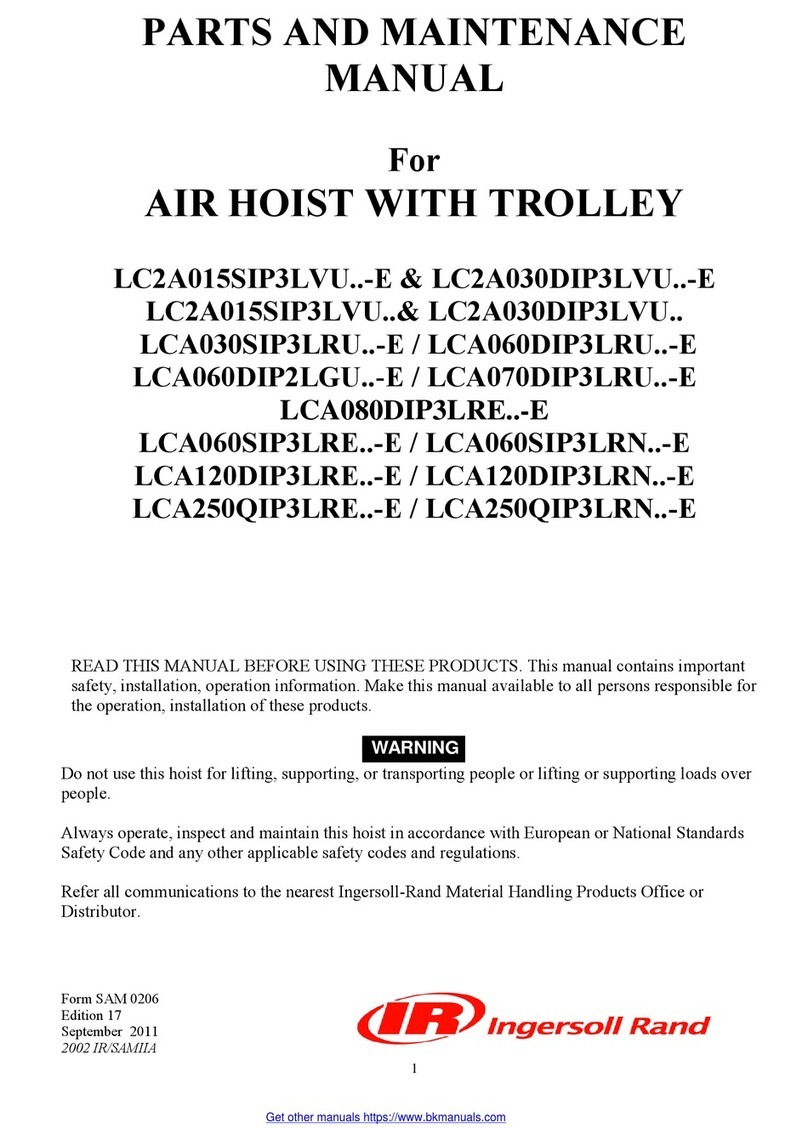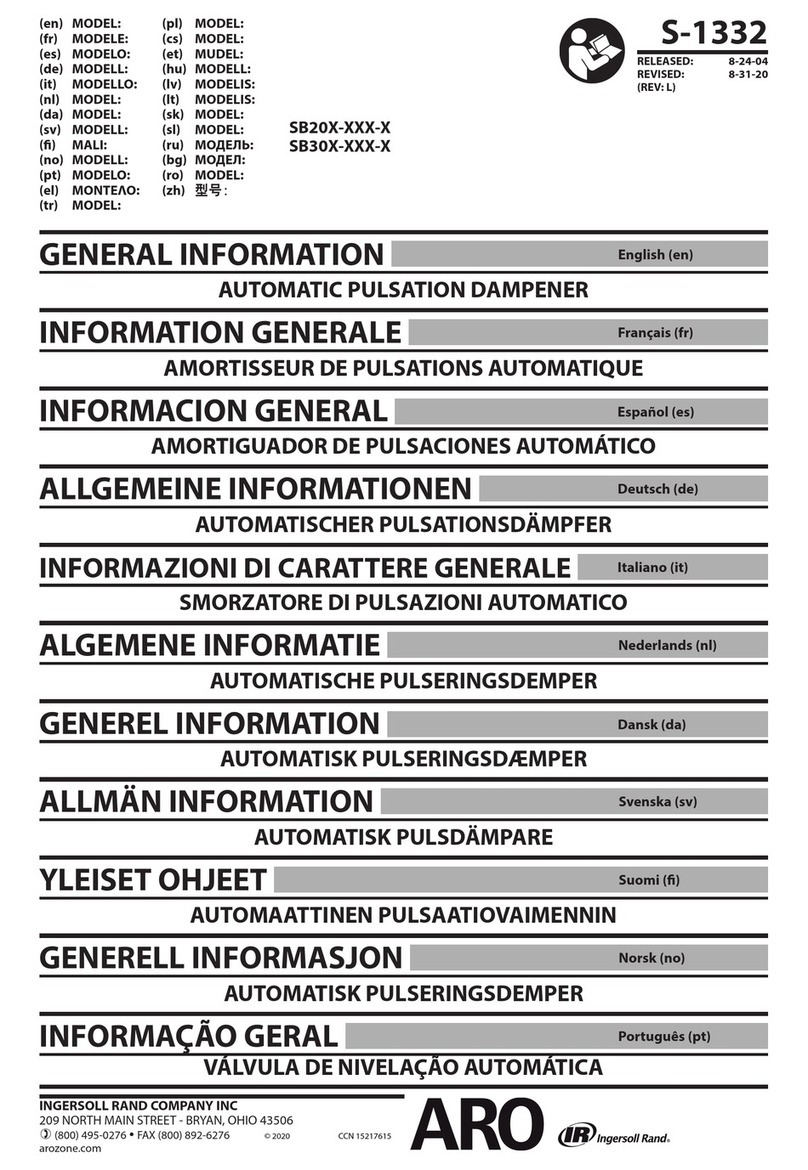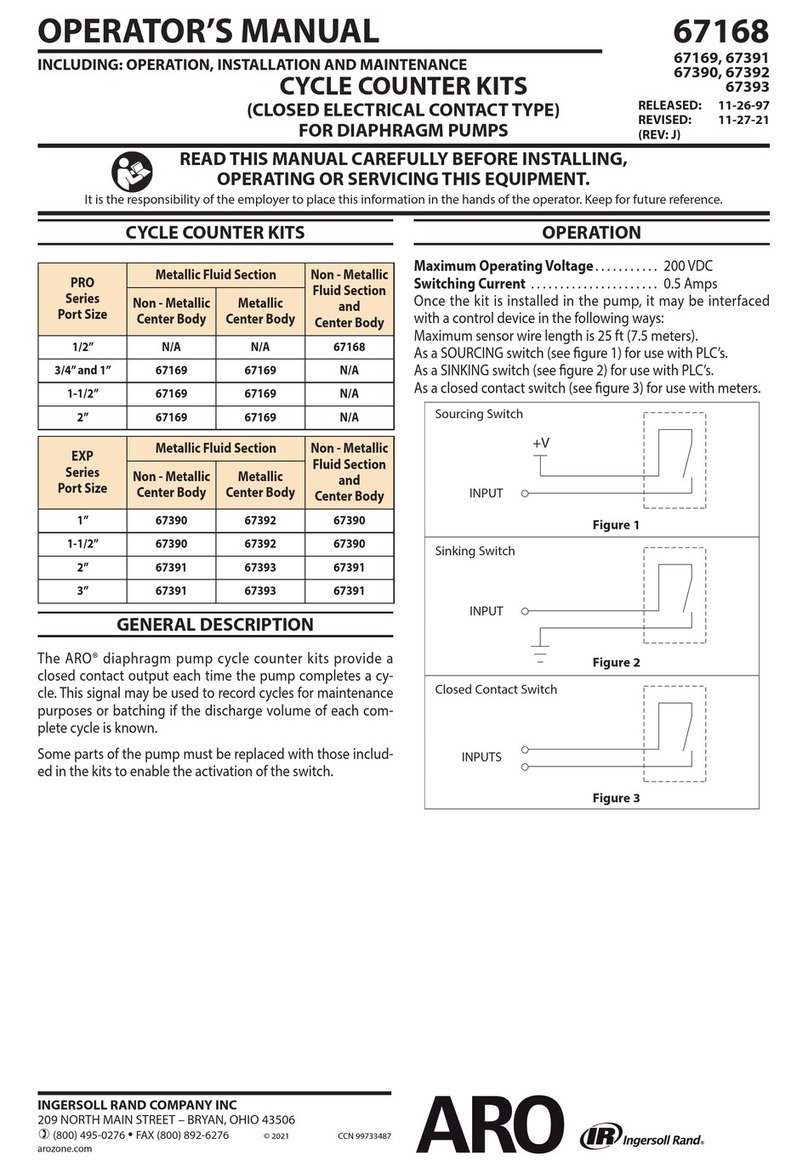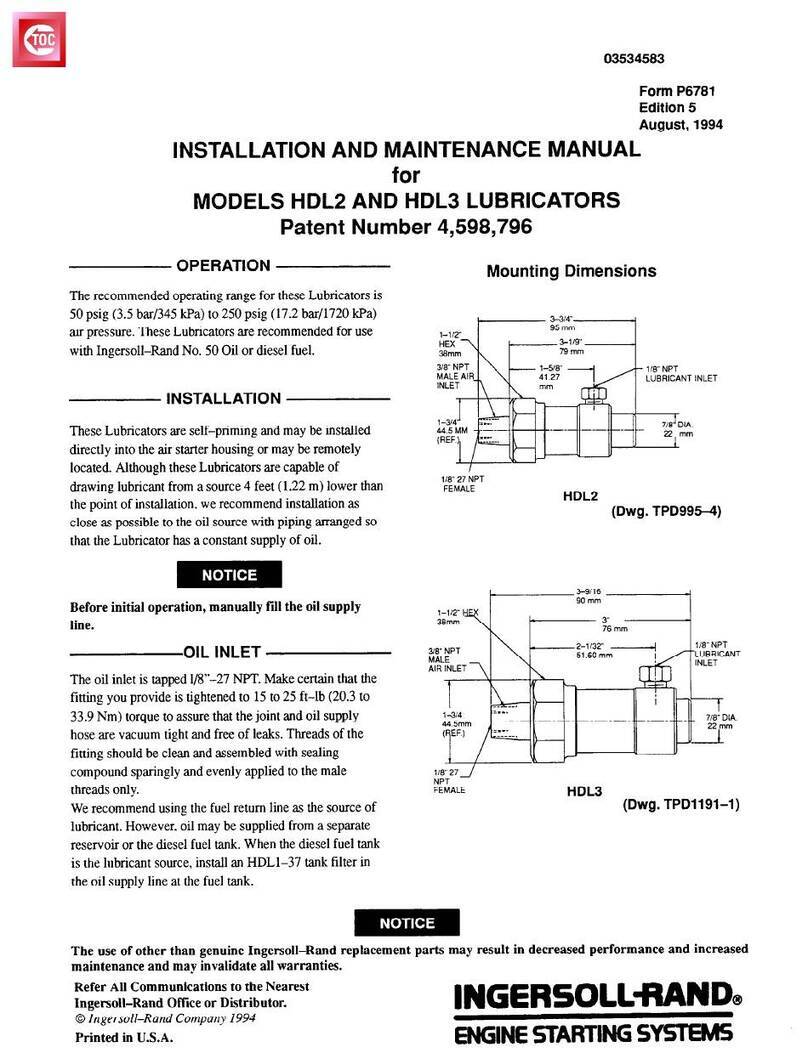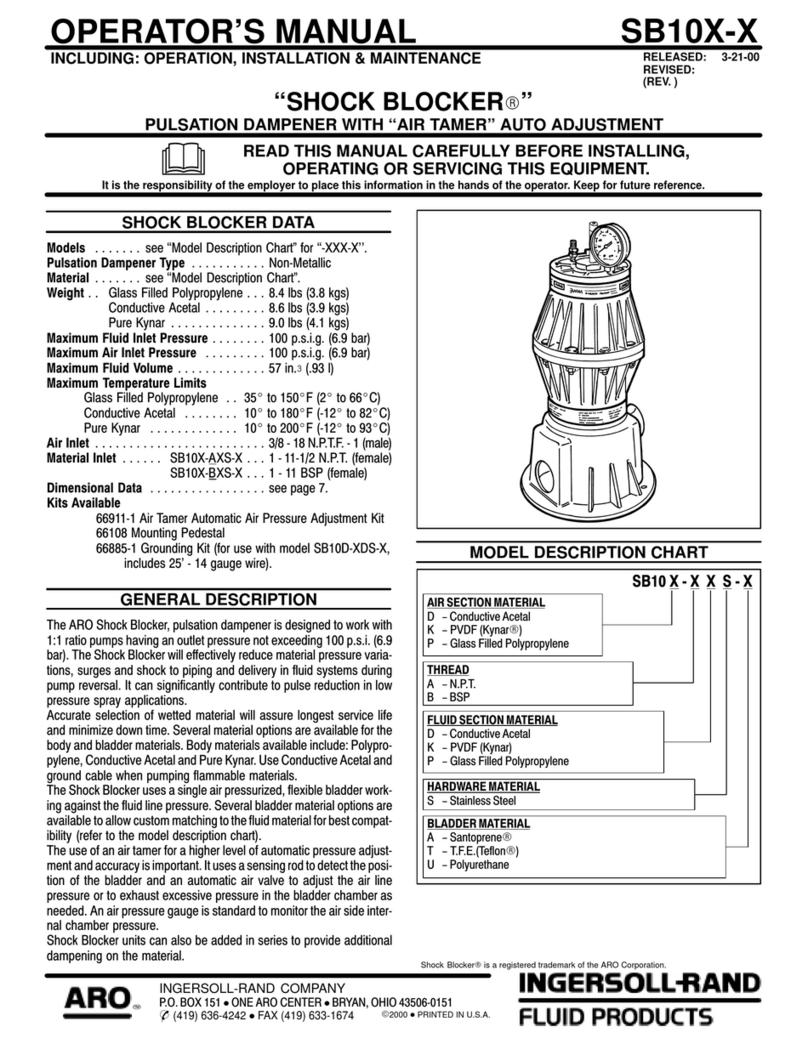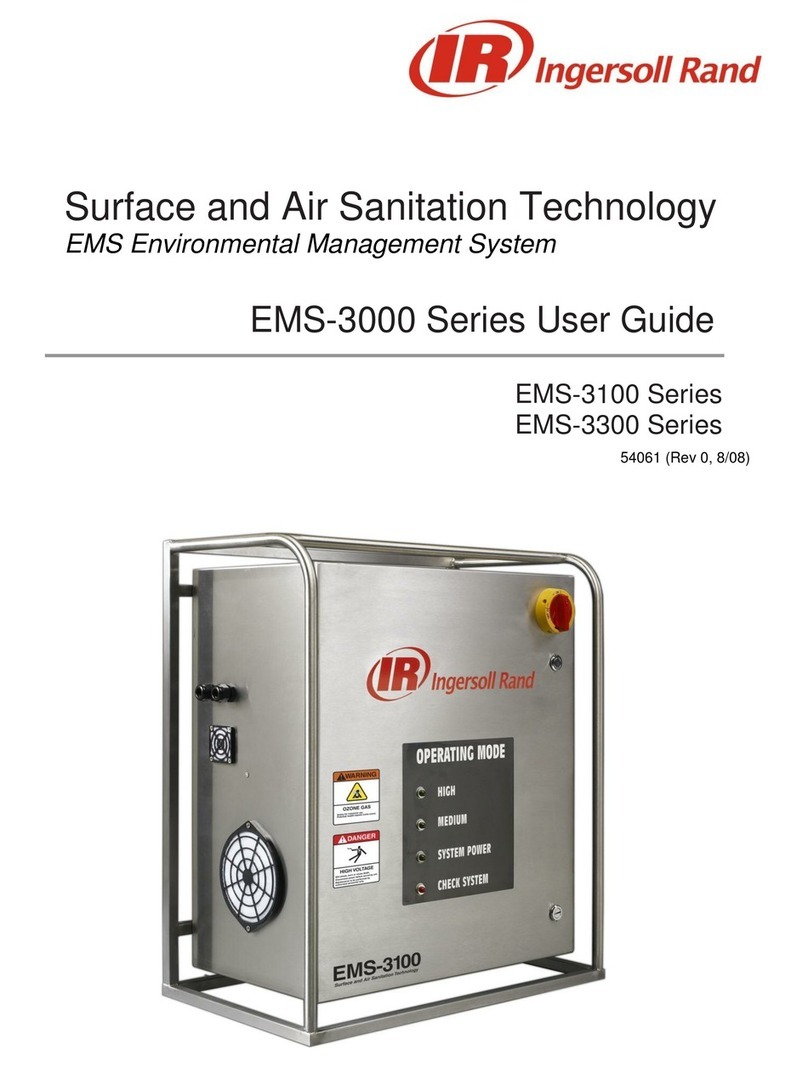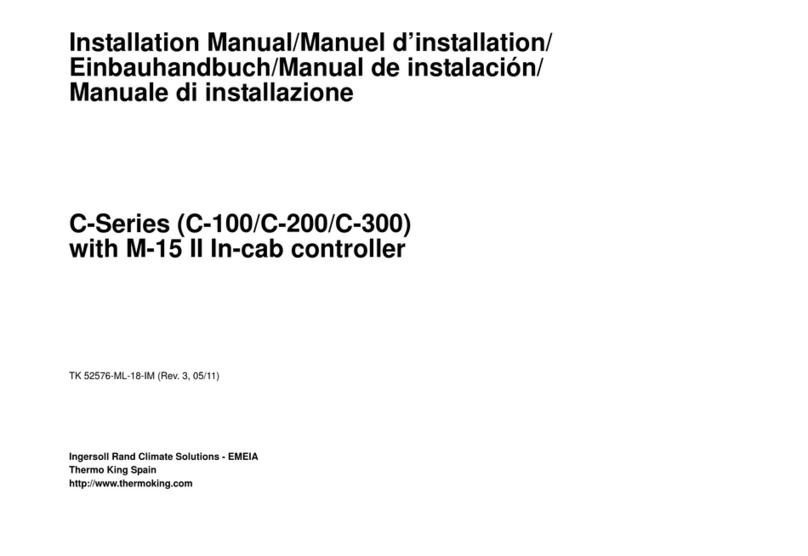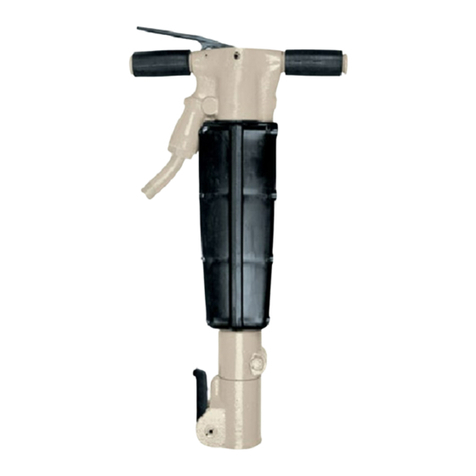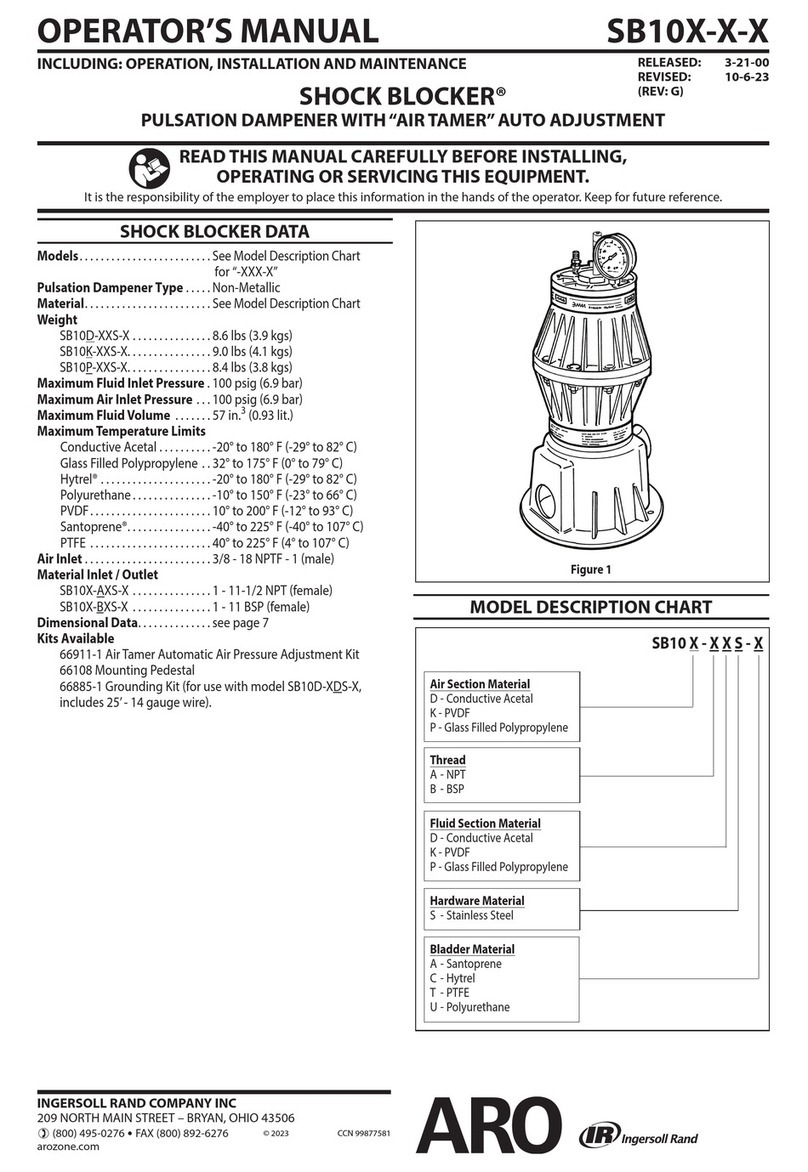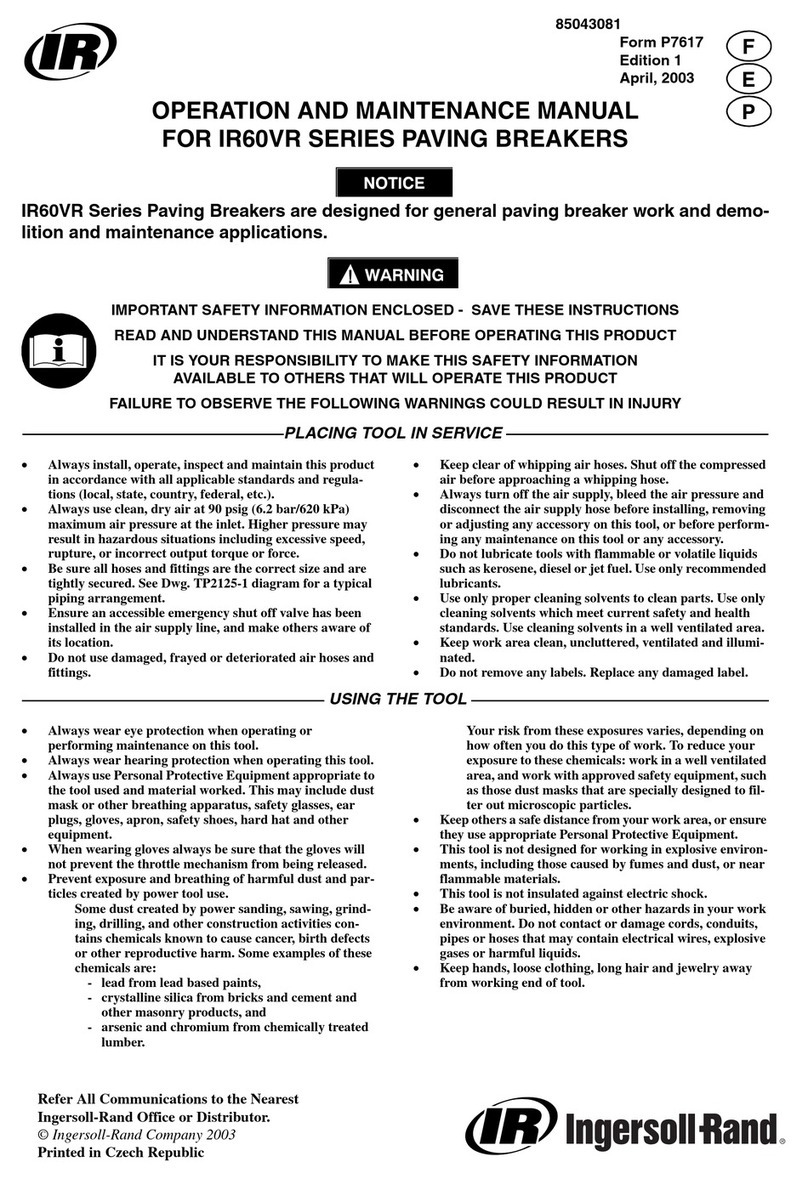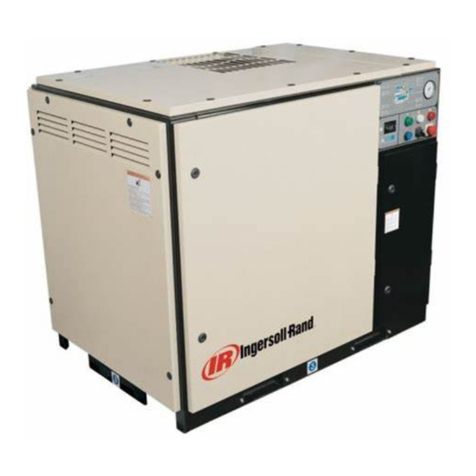
Page 2 of 4 PM0450L2XXXXXXXX(en)
INSTALLATION
The PM0450L2XXXXXXXX pail mounted comes completely
assembled. Remove the unit from the crate and place on a
level surface. Install the material hose and dispensing device
as required.
When the following instructions are observed, heavy paste
materials can be pumped directly from their original drum
without air inclusion or excessive waste. The follower plate
creates an air tight seal as well as clean-wiping action in its
progressive downward movement into the drum.
OPERATING AND SAFETY PRECAUTIONS
READ TH E GE NE R AL I NF OR MAT I O N
MANUAL INCLUDED FOR OPERATING AND SAFETY
PRECAUTIONS AND OTHER IMPORTANT INFORMATION.
EXCESSIVE INLET PRESSURE. Can cause ex-
plosion resulting in severe injury or death. Do not exceed
maximum operating pressure of 7500 psig (517.2 bar) at
150 psig (10.3 bar) inlet air pressure. Do not run pump
without using a regulator to limit air supply pressure to
the pump.
PUMP RATIO X INLET = MAXIMUM PUMP
PRESSURE TO PUMP MOTOR FLUID PRESSURE
Pump ratio is an expression of the relationship between the pump mo-
tor area and the lower pump end area. EXAMPLE: When 150 psig (10.3
bar) inlet pressure is supplied to the motor of a 50:1 ratio pump, it will
develop a maximum of 7500 psig (517 bar) uid pressure (at no ow) -
as the uid control is opened, the ow rate will increase as the
motor
cycle rate increases to keep up with the demand.
EXCESSIVE MATERIAL PRESSURE. Can
cause equipment failure resulting in severe injury or
property damage. Do not exceed the maximum material
pressure of any component in the system.
Thermal expansion hazard. This can occur when the uid
in the material lines is exposed to elevated temperatures.
Example: Material lines located in a non-insulated roof
area can warm due to sunlight. Install a pressure relief
valve in the pumping system.
AIR AND LUBE REQUIREMENTS
Filtered air will help extend the life of the pump, allowing the
pump to operate more eciently and yield longer service life
to moving parts and mechanisms.
Use an air line lter to provide good quality clean and dry
air. Install it up stream from the air regulator.
Use an air regulator on the air supply to control the
pump cycle rate. Install the regulator as close as possible
to the pump.
In most installations, lubrication is not required. If the
pump needs to have lubrication, install an air line lubrica-
tor between the pump and the air regulator and supply it
with a good grade of non-detergent oil or other lubricant
that is compatible with Nitrile seals. Set at a rate not to
exceed one drop per minute.
INSTALLATION
Assemble the components included in the package as
shown in Figure 2 (page 3). NOTE: In rigid plumbing applica-
tions, use exible material and air supply hoses when attach-
ing the pump to prevent damage by vibration.
Insert the pump into the adapter and tight at the proper
height with screws. Thread the bung adapter into the
cover. Insert the pump into the bung and then secure
with the thumb screws provided.
NOTE: Ensure the foot of pump have closed to the bot-
tom of the used drum.
1.
Install the outlet adapter, material hose, hose adapter
and gun with swivel.
Lay the follower on top of a full bucket of grease. Feed
the lower pump end into the follower and secure the
cover with the thumb screws.
Attach a connector to the pump and a coupler to the air
supply hose.
Connect the material hose to the pump outlet. Tighten all
ttings. Use caution not to damage threads.
OPERATION
START-UP
Turn the air regulator to "0" pressure setting. Connect the
air hose.
Prime the pump by cycling slowly, raising the pressure to
20 - 30 psig (1.4 - 2.1 bar). Cycle the pump until the test
grease and any trapped air has been purged from the
system.
Close the dispensing device. Allow the pump to build
line pressure and stall. Check for any leaks and re-torque
ttings if needed. Adjust the air pressure upward as
required for the application.
If the pump does not prime soon after initial
start-up, establish what the problem is to prevent unneces-
sary damage to the pump plunger.
SHUTDOWN
Disconnect the air supply from the pump if it is to be
inactive for a few hours. Open the dispensing device to
relieve line pressure.
SERVICE
Refer to the basic pump manual for service instructions which also
cover disassembly and reassembly for installation of the rebuild kit.
TROUBLESHOOTING
If the pump will not cycle or will not deliver material.
Be certain to check for non-pump problems including
kinked, restrictive or plugged inlet / outlet hose or dis-
pensing device. Depressurize the pump system and clean
out any obstructions in the inlet / outlet material lines.
Check all seals, including track gaskets.
Check direction of "U" cup lips.
2.
3.
4.
5.
1.
2.
3.
